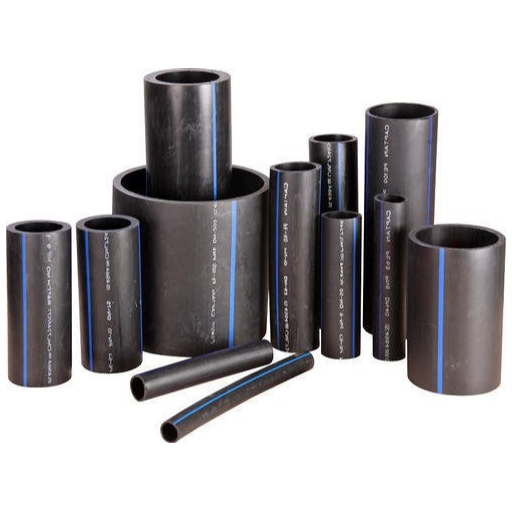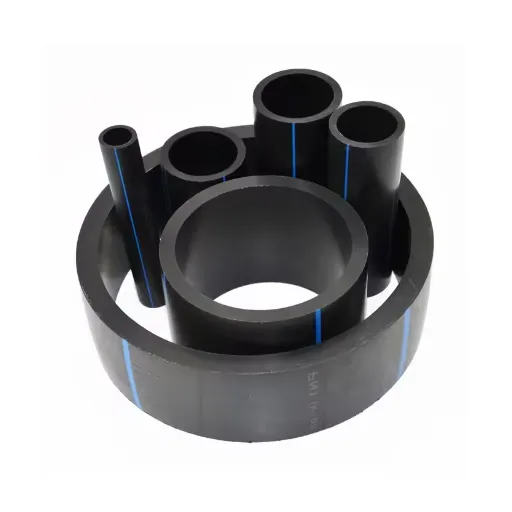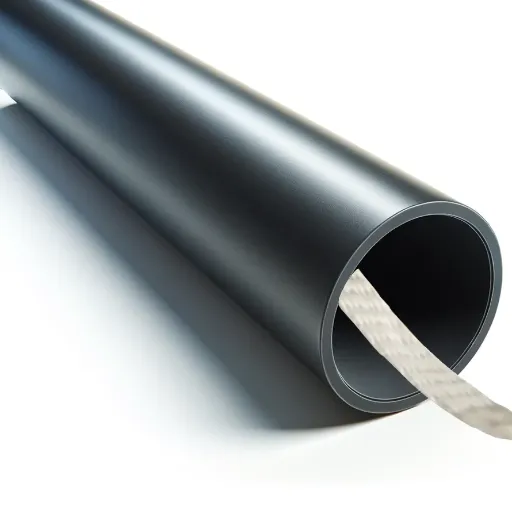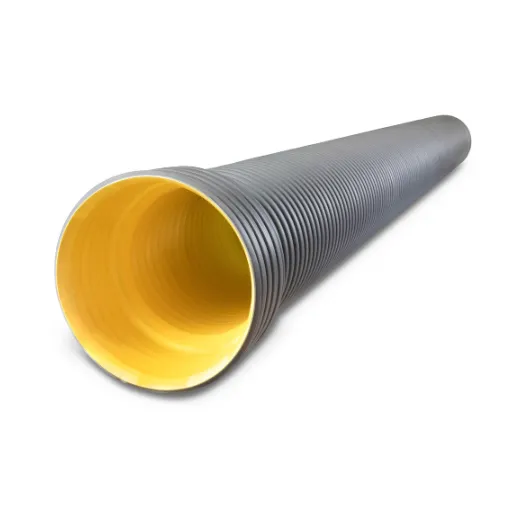Polyethylene (PE) plastic pipes have become a cornerstone in modern infrastructure, offering remarkable versatility and performance across a wide range of applications. Their rising popularity stems from their durability, corrosion resistance, and ability to deliver cost-effective solutions compared to other materials like PVC. But how do PE pipes truly measure up against their PVC counterparts? This article aims to provide an in-depth exploration of PE plastic pipes, highlighting their key advantages, common applications, and a comprehensive comparison with PVC pipes. Whether you are a decision-maker in construction, a plumbing professional, or simply curious about these materials, this guide will equip you with the knowledge needed to make informed choices.
Introduction to PE Plastic Pipes
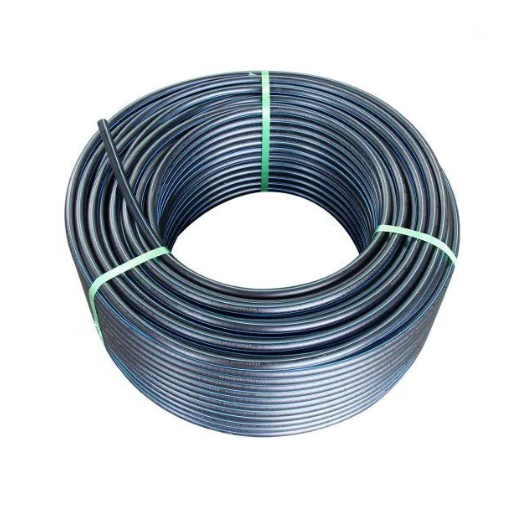
What are PE Plastic Pipes?
Being made from polyethylene, which is a thermoplastic resin, polyethylene plastic pipes are sturdy piping solutions with the characteristics of flexibility, strength, and chemical resistance. Owing to their corrosion resistance, these pipes are used in various industries for transporting liquids and gases. PE pipes are either HDPE or MDPE, thereby giving several options depending on requirements.
Since PE pipes are lightweight and flexible, they are traditionally less cumbersome when it comes to handling, installing, or transportation compared to comparatively rigid PVC or metal pipes. Also, the pipes have a seamless inner lining, which means less frictional loss for the water, gases, or materials being transported thereby increasing flow efficiency. Moreover, PE plastic pipes resist scaling and bacterial growth, making them applicable for sites requiring potable water and hygiene standards.
These pipes are typically used in water distribution, gas pipelines, sewage systems, and agricultural irrigation. They can sustain being poured out under various environmental conditions, including high-pressure systems and shifting soils, without getting cracks or breaking. These have proved great properties, making PE pipes a reliable, lasting option in both residential and industrial installations.
Types of PE Pipes: HDPE vs. Other Materials
Polyethylene tubing variations, such as HDPE, LDPE, MDPE, and so forth, are there with differences in terms of density, strength, and flexibility.
|
Key Point |
HDPE |
LDPE |
MDPE |
Other PE |
|---|---|---|---|---|
|
Density |
High |
Low |
Medium |
Varies |
|
Strength |
High |
Low |
Moderate |
Varies |
|
Flexibility |
Moderate |
High |
Moderate |
Varies |
|
Durability |
High |
Low |
Moderate |
Varies |
|
Applications |
Industrial |
Packaging |
Gas, Water |
Varies |
Common Applications of PE Plastic Pipes
Due to their chemical makeup, plastic pipes are extremely versatile and have found their applications in innumerable engineering disciplines. Here is an elaborate depiction of specific applications for PE the precise specifications of how PE pipes perform in these areas:
- Water Distribution Systems: PE pipes have their major uses in municipal and residential water supply networks. Since potable water is non-toxic, PE pipes resist chemical substances without leakage when carrying high water. For example, HDPE pipes can resist pressures of about 16 bars; hence, they’re used in water supply for long distances.
- Sewage and Drainage Systems: To ease the flow rate, PE pipes and fittings have a smooth interior surface, while the ability to resist chemical attacks and abrasion classifies them for handling wastewater, sewage, and stormwater. PE pipes are widely used in large open urban drainage systems where durability and minimum maintenance are a priority.
- Agricultural Irrigation: Being flexible and lightweight, PE pipes find wide usage in irrigation systems, including drip irrigation and sprinkler setups. UV resistance, together with the ability to withstand extreme weather conditions, gives them preference in agriculture, especially where climatic conditions differ.
- Natural Gas Transportation: PE pipes also meet the highest safety standards for copying platforms for natural and liquefied petroleum gas. They are strong and flexible enough to assist soil movement while preventing leakage in high-pressure systems. Based on studies, PE pipes possessing gas distribution systems pass fifty years with little degradation.
- Industrial Liquid Transportation: PE pipes are applied in industrial settings for the transportation of chemicals, slurry, and hazardous liquids. They are resistant to acids, bases, and organic solvents, which, in turn, make them ensures long-term stability and reliability, whether they are in intensely corrosive conditions.
This is the demonstration of applications that show the versatility of PE pipes, which are becoming more and more popular in different industries with slight variants in pricing, very low environmental damage, and excellent performance.
Advantages and Disadvantages of PE Plastic Pipes
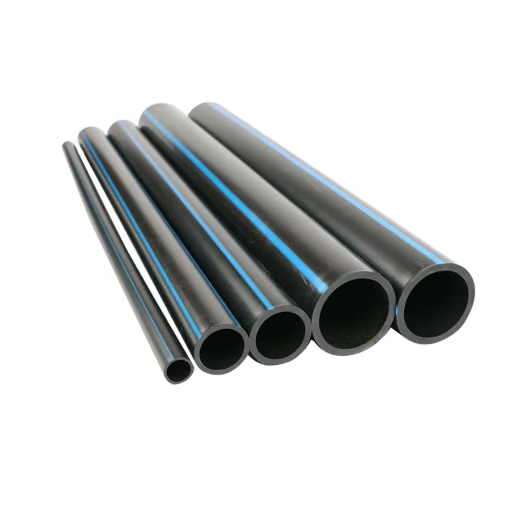
Benefits of Using PE Pipes
- Getting Rust-Proof: PE pipes undergo corrosion with corrosive chemicals, moisture, and soil conditions. Unlike their metallic counterparts, PE pipes do not rust or corrode in the presence of chemicals or high humidity. Hence, in any circumstance involving corrosion or high humidity conditions, PE pipes are considered the ideal choice. According to recent studies, PE pipes can last even over 50 years in a corrosive atmosphere, thereby drastically cutting down maintenance and replacement expenses.
- Increased Flexibility and Ductility: One of the greatest features of PE pipes is their ability to remain flexible enough to accommodate the formation of the terrain and ground movements without breaking. This property works against the ground movements arising in earthquake situations. Ductility also ensures that the pipe can be coiled for easy transportation and installation, thus cutting down half of the time and labor costs.
- Light in Weight: PE pipes are substantially lighter than steel or concrete pipes. This ameliorates the transportation problems and costs peculiar to the use of heavy materials. For instance, a 20-foot-long section of the PE pipe can weigh at least 50% less than the equivalent metal one, thus providing an advantage in terms of ease of operations and faster installation that is also safe.
- Low Thermal Conductivity: Polyethylene, having a thermal conductivity of about 0.4 W/mK, makes PE pipes hold on quite well to heat and thus are efficient in energy saving. This feature has an implication in underfloor heating and hot-water transportation applications where minimizing heat loss is very crucial on an efficiency basis.
- Environment-Friendly: PE pipes undergo recycling and bear less environmental impact during production, compared with traditional materials. By durable construction and long life span, they reduce the need for frequent replacement, leading to less waste. Moreover, a lesser amount of energy gets involved during manufacturing and transportation of PE pipes, consequently lowering carbon emissions in the entire life cycle.
All these paint a great picture of PE pipes that completely justifies their use in a variety of industrial, municipal, and residential applications.
Disadvantages of PE Pipes
While PE pipes do provide many benefits, the disadvantages of PE pipes must be evaluated to see whether these suit specific applications. These are the five major disadvantages of PE pipes:
- Sensitivity to UV Radiation: Prolonged exposure to UV radiation can degrade the material properties of the PE pipes. Prolonged surface exposure may develop surface cracking, discoloration, and loss of mechanical strength. To avoid this, a UV stabilization additive is usually mixed during production; however, this again adds to the cost.
- Lower Temperature Limitations: In contrast to metal and some special piping materials, PE piping cannot withstand very high-temperature operations. The maximum working temperature of PE pipes generally lies between 140°F (or 60°C) and 176°F (or 80°C), depending upon the grade of polyethylene used. Beyond this, the material starts to soften and may fail structurally.
- Prone to Mechanical Damage: Though highly flexible, PE pipes are vulnerable to surface damage caused by sharp-edged objects or rough treatment while being installed. Any such abrasion, dents, or gouges on the surface may grow with time and further into the pipes’ structural defect, mostly in high-pressure loss.
- Chemical Compatibility Limitations: Though PE materials show compatibility with a large spectrum of chemicals, they are unsuitable in strong oxidizers, some hydrocarbons, or chlorinated solvents environments. Such an exposure under a chemical degradation effect can be considered as advantageous to swelling and cracking, which would reduce the lifetime of the pipe.
- Higher Thermal Expansion: PE pipes have a much higher coefficient of thermal expansion compared to much more traditional materials such as steel and copper. They tend to go through a lot of movements in the form of considerable expansion or contraction due to fluctuating temperature conditions, which must be taken into account during the design of the system. Wrong installation can mean misalignment and stress on joints, or could even increase the risk of fraudulent activity.
Being aware of these drawbacks is certainly useful in the evaluation of PE pipes to ensure their long-term reliability and performance in environments that pose great challenges. Many of these drawbacks may be avoided by the apt selection of materials, means of engineering design, and practicing proper installation.
Cost-Effectiveness of PE Pipes
Polyethylene (PE) pipes have been considered cost-efficient upon consideration of many factors, including material properties, low maintenance, and longer service life. Loss prevention is cheaper with PE pipes since they weigh less and are easier to transport than conventional pipes made out of steel or copper, and hence incur lower shipping expenses. As installation disadvantages are nearly fading away, PE pipes being light and flexible need less manpower and tiring equipment.
In contrast, PE pipes work primarily towards operational cost reduction for maintenance. Since they resist corrosion, repairs seldom come up, if at all. Furthermore, their unusually smooth interior keeps friction losses to a minimum, as well as enhancing flow efficiencies, consequently reducing costs on pumping energy. Studies show that in applications in water distribution, gas pipeline, and sewer systems, PE piping system life-cycle costs are far less in comparison to those for traditional materials.
In another way, PE pipes have gained cost advantages owing to the growing acceptance of trenchless installation techniques. By trenchless installation, minimal excavation is done, so there is less disruption and restrictions on extra costs than in open-cut installation. In combination with technological improvements that now provide PE materials with higher durability and pressure ratings, the bottom line of PE pipes genuinely makes it eminently worthwhile for both municipal and industrial usages.
Durability and Resistance of PE Plastic Pipes

Longevity and Lifespan of PE Pipes
Polyethylene (PE) pipes are very much revered for their longevity and extended lifespan. Researchers have found that depending upon some factors, including factors such as grade of the material, installation procedures, and environmental factors, PE pipes can provide satisfactory service over a time period of more than 50 to 100 years. This long-life outcome owes its being to the molecular stability of HDPE, which can offer very high resistance to environmental stress cracking and oxidative degradation.
One major longevity factor stems from the high resistance of PE pipes to corrosion and chemical attacks usually inflicted upon traditional pipe materials as they age. PE pipes also possess a high degree of tolerance against temperature variations and external mechanical stresses, thus guaranteeing reliability both in below-ground and above-ground applications. Improvements in PE resin chemistry and processing technology, including the use of improved anti-oxidant additives, have given modern PE pipe greatly enhanced longevity.
Field evidence and laboratory-based data confirm that PE piping systems continue to regain their structural integrity and pressure-blocking capabilities for decades when embedded in the ground properly, leading to fewer maintenance requirements and reduced impact on the environment. Hence, such longevity dictates PE pipes’ use over the other types of pipes in municipal water distribution, gas supply transmission networks, and industrial fluid handling systems.
Resistance to Corrosion and Environmental Factors
This is one of the prime advantages these polyethylene pipes have with respect to corrosion resistance over metals or concrete. Thus, chemically stable polyethylene resists attacks by soils, water, or electrochemical reactions. Unlike metallic pipes, PE pipes will never rust or scale, establishing themselves as a superior choice for long-term industrial applications in all types of terrain.
Moreover, PE pipes display excellent resistance against deterioration by UV rays and chemicals. Advanced grades of HDPE are compounded with carbon black or other UV stabilizers to reduce the damaging effects of long-term sunlight irradiation on pipe surfaces. Laboratory studies and field trials have shown that UV-stabilized PE pipes maintain their physical and mechanical properties even after many decades of outdoor use.
Such resistance to adverse environmental factors ensures PE pipes’ suitability for applications in extreme climatic situations. In sub-zero temperature conditions, wherein conventional materials may crack, PE pipes are highly reliable, while in hot conditions, the pipes retain their shape without undergoing expansive or contractive movements. Thus, these characteristics stand as testimony to the technical finesse that PE pipes provide to modern infrastructure. Hence, being corrosion-resistant and adaptable to environmental challenges, these ensure the efficiency and sustainability of their various utilization possibilities.
Comparative Analysis: PE vs. PVC Pipes

Differences Between HDPE and PVC Pipes
HDPE is flexible and durable, and resistant to UV rays and temperature extremes. PVC is rigid, stronger, economical, and better for static pressure.
|
Aspect |
HDPE |
PVC |
|---|---|---|
|
Flexibility |
High |
Low |
|
Tensile Strength |
Moderate |
High |
|
UV Stability |
Complete |
Vulnerable |
|
Temperature Range |
-40°F to 140°F |
-10°F to 140°F |
|
Longevity |
High |
Moderate |
|
Connection Type |
Heat Fusion |
Cement Joints |
|
Expense |
Higher |
Lower |
|
Weight |
Low |
High |
|
Reusability |
High |
Low |
|
Usage |
Gas, Water, Mining |
Sewage, Plumbing |
|
Service Life |
100+ Years |
50-100 Years |
|
Pressure Handling |
High Working |
High Static |
|
Bending Ability |
Small Radius |
Large Radius |
|
Chemical Tolerance |
High |
Moderate |
Advantages of HDPE Over PVC Pipes
- Longevity and Service Life: HDPE pipes have a longer service life of more than 100 years, in contrast to PVC pipes, which generally last between 50 and 100 years. Hence, HDPE is preferred for infrastructures with a long working life.
- Weight and Handling Convenience: Being lighter than PVC, HDPE pipes are considered most transportable and installable, thereby cutting labor costs and shortening project schedules.
- Bending and Flexibility: HDPE pipes can tolerate a smaller bending radius, accommodating relatively smoother handling on installation through rigid pipeline-related work in uneven terrains or places where pipes must be curved without generating costs of extra fittings.
- Chemical Resistance: During chemical processing, HDPE pipes are considered to stand against harsher substances, whereas they stand resistant to deterioration by severe environmental causes.
- Reusability and Environmental Benefits: HDPE is quite reusable, supporting changes in sustainability through recycling and the conservation of other types of wastes with time, unlike PVC pipes, which lack such reusability.
These attributes technically and economically place HDPE pipes as another alternative to pursue for different industrial and municipal applications.
Limitations of PVC Compared to PE Pipes
PVC pipes(Polyvinyl Chloride) indeed have their technical limitations when placed in comparison with PE (Polyethylene) pipes:
- Brittleness Under Low Temperatures: Invariably going against their applications in cooler climates or an environment with wide temperature variability, PVC pipes tend to fracture at very low temperatures due to their low impact strength.
- Chemical Resistance: General chemical resistance is displayed by PVC, but it would degrade if exposed to certain solvents, strong acids, or bases. PE pipes, especially HDPE, resist these substances very well, thus considered better for industry applications with the conveyance of harsh chemicals.
- Flexibility and Fatigue Resistance: PVC is rigid and less flexible in comparison with PE. This rigidity adds to the installation complexity and could subject PVC pipes to damage during ground movements, such as soil settling or seismic movement. PE pipes, contrastingly, are freely ductile enough to withstand bending and flexing without any compromise in structural integrity.
- UV Resistance: PVC tends to get degraded on prolonged exposure to the ultraviolet (UV) light, unless protected with stabilizers; PE, especially the UV-treated type, stands much better against sun rays and thus suits outdoor and above-ground applications more.
- Limited Lifetime in Pressure Applications: PVC pipes are rated with lower long-term pressure and, thus, over a long time of use, might undergo stress cracking or deformation, in cases where continuous high pressures are at work on it. PE pipes, on the other hand, with their almost splendid creep resistance and ductile nature, would be excellent pressure-resisting pipes in high-pressure environments.
- Recyclability Constraints: Even though PVC meets the status of recyclable, recyclability is more complicated due to additives present therein, typically stability and plasticizers. PE is a relatively easy polymer to recycle and, so, sustains the environment and also lowers environmental concerns.
Such limitations surely reveal the preferable position of PE pipes, particularly if performance, chemical resistance, and ease of adaptation to environmental conditions become of paramount concern.
Environmental Impact and Sustainability of PE Plastic Pipes
Recyclability of PE Pipes
Polyethylene (PE) pipes are highly recyclable; therefore, they are a sustainable option in many situations. Recycling is done by taking advantage of their behavior as thermoplastics, which can be melted and reprocessed repeatedly into any shape with almost no quality degradation. When collected and sorted properly, different kinds of products can be manufactured out of recycled PE pipes, such as a new piping system, plastic containers, and construction materials.
Besides other factors, the recyclability of PE pipes also contributes to waste minimization and resource conservation. End-of-life PE pipes have recently witnessed some industry reports stating their reclaim and reintegration into production cycles of the order of 95%, which accordingly results in decreasing the dependency on virgin materials. Developments in mechanical and chemical recycling, on the other hand, are now paving the way for more efficient recovery methods that guarantee higher re-utilization rates for the material.
Because these kinds of piping systems have usually had an expected working life of more than 50 years, the long-term durability, in addition to recyclability, actually end up being one of four most important parameters defining environmental friendliness. Efforts to improve recycling infrastructure and strengthen policies further justifiably enhance the status. Opportunity that calls for adequate reliability and environmental compliance.
Role in Sustainable Practices
PE piping systems contributed to sustainable practices because of their properties of being efficient, durable, and versatile. Below are five detailed elaborations explaining how PE pipes help in the sustainability movement:
- Lower Carbon Footprint: Research shows that manufacture of PE pipes consumes less energy and emits fewer greenhouse gas emissions than do alternative materials such as concrete and metals. The manufacturing process emits approximately 30% less CO₂ than their PVC counterparts of similar diameter.
- Reduced Water Loss: Being leak-free and resistant to corrosion, PE pipes reduce water loss through distribution systems by as much as 45%; therefore, their importance in conserving water resources within cities and agricultural areas is immense.
- Durability and Longevity: PE piping systems have an operational lifespan of more than 50 years if under normal conditions, limiting the times of replacement and lowering the material wastes that could be generated over time. Such endurance aids environmental conservation by lessening the continuous need for raw material extraction and manufacturing.
- Recyclability and End-of-Life Management: PE pipes are 100% recyclable. Once they have served their purpose, they can be wrapped up quickly through the collection and recycling of these materials into the manufacturing of newer plastic products. This greatly diminishes the waste output.
- Support for Renewable Energy Systems: PE pipes are installed to great benefit in geothermal heating and cooling systems because of their thermal conductance and benefits. Utilizing this application advances renewable energy technologies and promotes sustainable solutions for the present energy demand.
When these factors are combined, it becomes obvious how PE pipes relate directly to sustainable development goals across such industries as construction and water management.
Future Trends in PE Pipe Manufacturing
For me, the future of PE pipe manufacturing depends on advances in material sciences and processes. Major trends include the development of improved formulations of polyethylene like PE-RT (Polyethylene Raised Temperature) and PE100-RC (Resistance to Crack), which provide better durability, tolerance to temperature, and resistance to environmental stress. These ensure that PE pipes still perform better than conventional materials in demanding applications such as high-pressure conveyance of water and industrial applications.
Automation and digitization are transforming PE pipe production. Industry 4.0 technologies are being embraced into manufacturing facilities-the IoT-empowered lines of production, highly advanced robots, and systems for real-time monitoring. This shift means the ability to great precision, reduce wastes, and monitor quality control-a win for cost efficiency and sustainability. Incorporating big data analytics and machine learning will further help with predictive maintenance, ensuring long-term operational stability in the production systems.
In the wake of the evolution of PE pipe manufacturing, sustainability has moved to the forefront. Investments by the producers are aimed at closed-loop recycling techniques so that PE pipes reaching their service life can be recycled, easing the environmental burden. Also, research is underway for bio-polyethylene made from renewable materials, which could substantially decrease the carbon footprint of PE pipe production. These developments thereby keep the industry in sync with global environmental goals and assure the industry’s growth in the long run still pending on rising demand for environmentally friendly instruction solutions.
References
Frequently Asked Questions (FAQ)
Q: What is PE Plastic Pipe?
A: PE Plastic Pipe, or polyethylene pipe, is a widely used piping material made from high-density polyethylene (HDPE) that is known for its flexibility, durability, and resistance to corrosion. It is commonly used in various applications, including water supply systems, irrigation, and drainage.
Q: What are the advantages of using HDPE pipe?
A: HDPE pipe offers several advantages, including excellent resistance to chemicals, high durability, and a long service life. Its ability to withstand higher temperatures and pressure ratings makes it suitable for a range of applications, from potable water systems to drainage.
Q: How does PE differ from PVC in piping?
A: The main difference between PE and PVC pipes lies in their material properties. PE pipes are more flexible and resistant to impact and corrosion, while PVC pipes are rigid and often used for lower-pressure applications. Additionally, PVC is not always approved for potable water use, while PE can be.
Q: Are PE pipes safe for drinking water?
A: Yes, PE pipes, particularly those approved for potable water systems, are safe for human consumption. They are designed to meet stringent standards for drinking water quality and are resistant to slow crack growth and other potential issues.
Q: What are the common applications of HDPE pipe?
A: HDPE pipe is commonly used in various applications, including water supply pipes, irrigation systems, drainage systems, and as a material for water mains. Its versatility also extends to being used in construction and underground installations.
Q: How do you connect HDPE pipes and fittings?
A: HDPE pipes and fittings can be connected using several methods, including butt fusion, electrofusion, and mechanical fittings. These connections ensure a leak-free and durable pipeline system suitable for high-pressure applications.
Q: What is the typical lifespan of polyethylene pipes?
A: The typical lifespan of polyethylene pipes can vary, but they are generally known to last over 50 years when properly installed and maintained. Factors such as environmental conditions and usage can influence their longevity.
Q: Can HDPE pipes be used for non-potable water applications?
A: Yes, HDPE pipes are commonly used for non-potable water applications, such as irrigation and drainage systems. Their resistance to chemicals and physical stress makes them suitable for various water applications where drinking water is not required.
Q: What sizes do PE plastic pipes come in?
A: PE plastic pipes come in a variety of sizes, including large diameters like 600mm and 450mm PVC pipe equivalents. The size selected depends on the specific application and the required flow capacity.
Q: How do you ensure the durability of PE plastic pipelines?
A: To ensure the durability of PE plastic pipelines, it is essential to use high-quality HDPE material, select appropriate fittings, maintain proper installation techniques, and regularly inspect the pipelines for signs of wear or damage. This helps prevent issues like rapid crack propagation and ensures long-term performance in the pipeline system.



